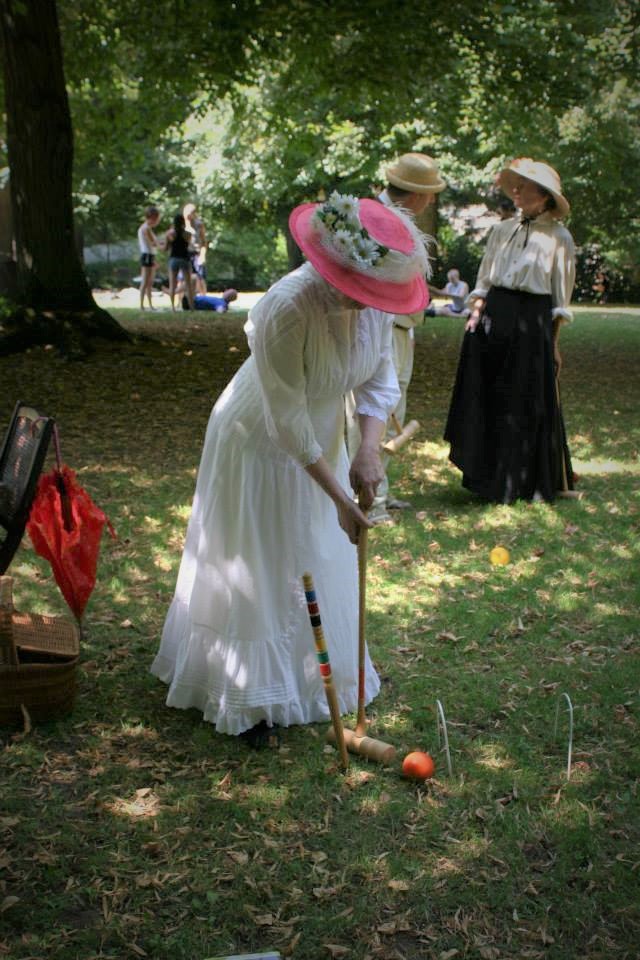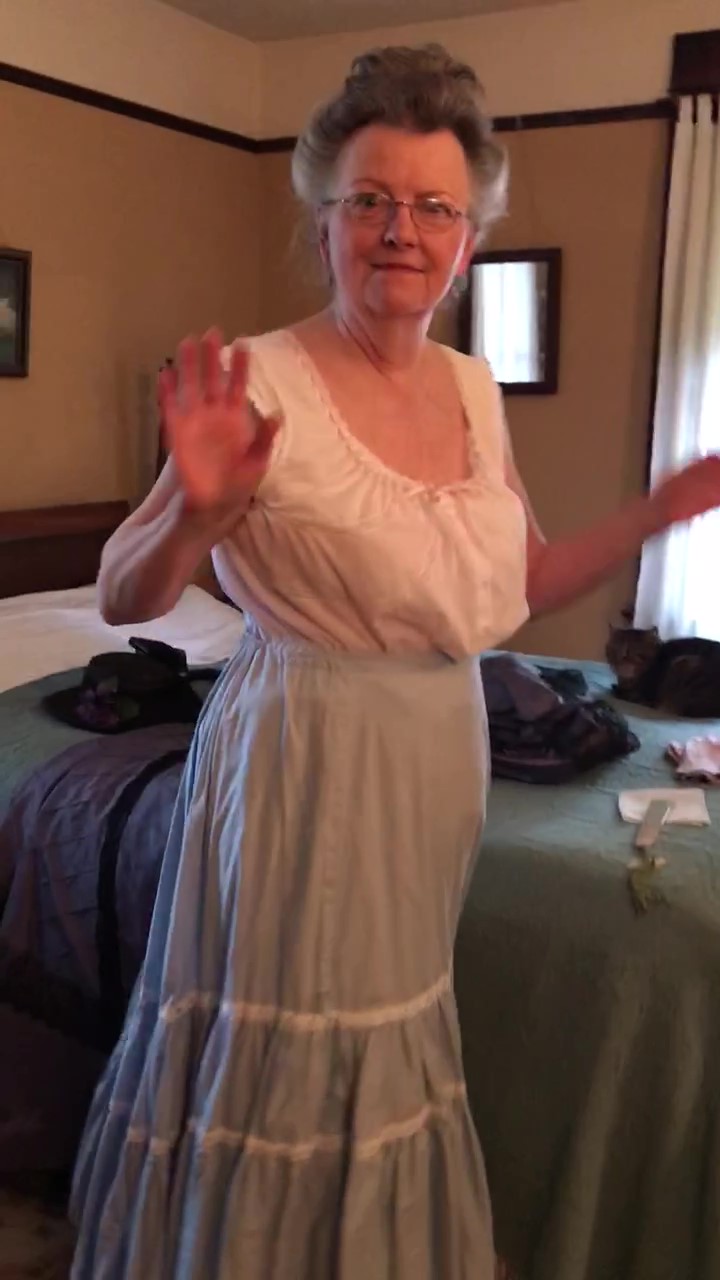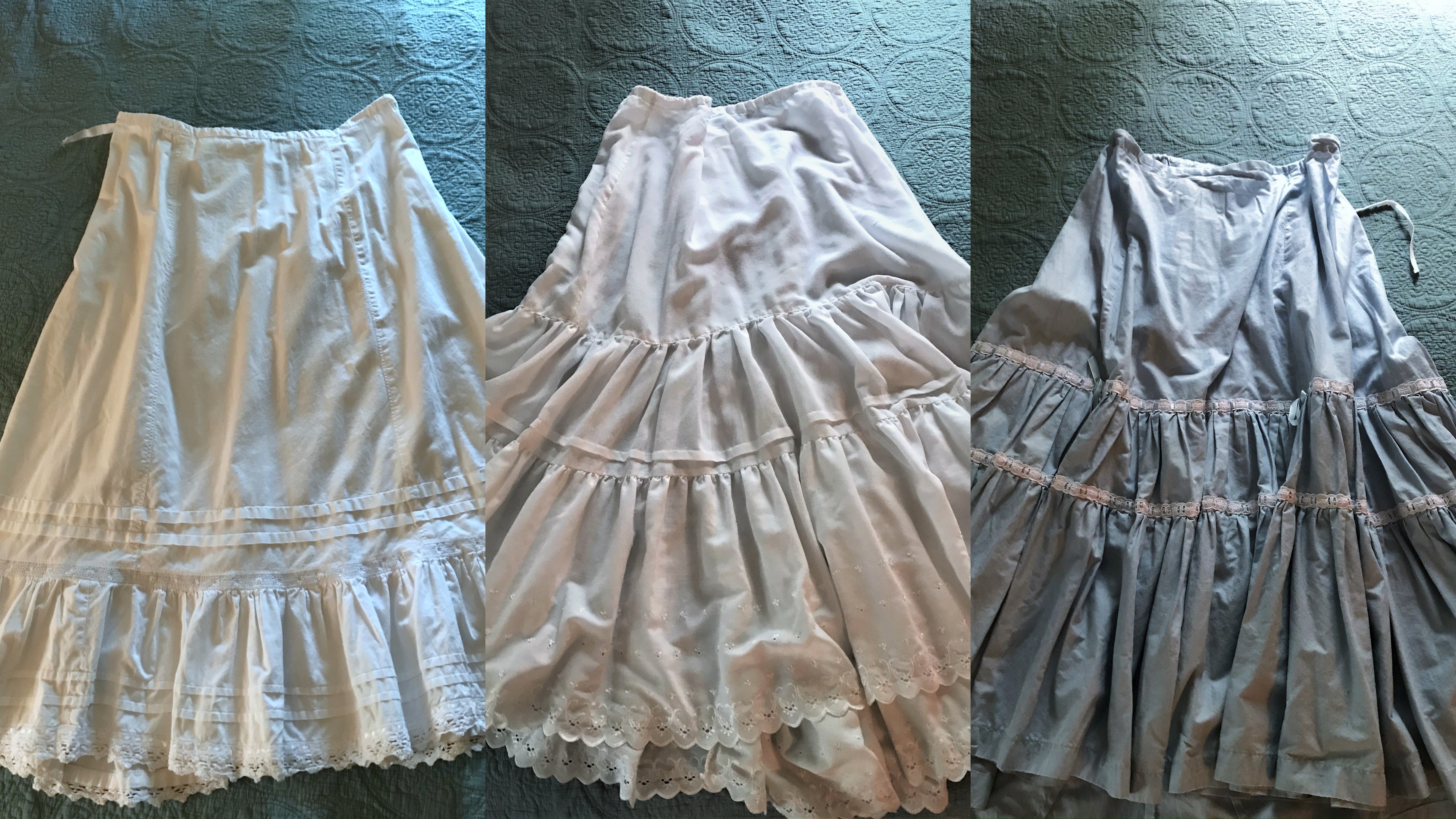
Our 1909 American lady, Mrs. Maggie Lynde, is making an inventory of her clothing in preparation for a small spending spree. After years of caring for her aging Auntie, and then a year in mourning and half-mourning, she is finding her wardrobe quite depressing. The older dresses are quite worn to pieces, and not worth including in her list.
The few dresses that are still in decent condition are a very small collection indeed. She has two wrappers that she still wears. One is from the time before Auntie passed away. The rich colors are still so pleasing. The other one, made of a black cotton print on black chambray, is a reminder of that year of mourning, and perhaps not Maggie’s favorite color. But wrappers are useful garments, easy to put on first thing in the morning for breakfast and light housework, and Maggie will keep them both for now.
 There is the blue plaid gingham dress, mostly worn in the house, but nice enough for a quick visit to the neighbors.
There is the blue plaid gingham dress, mostly worn in the house, but nice enough for a quick visit to the neighbors.
There is the purple wool-and-cotton gown, trimmed with black brocade ribbon. It was the height of elegant style when she first made it, back in 1907. It was a soft blue-gray then, but over the years the color has faded. Maggie had been seeing the ads for Diamond Dyes, and finally grew bold enough to attempt changing the color with dye! She is still not 100% happy with the result. Perhaps some  day she will mix up another dye bath on the stove and give it a second pass.
day she will mix up another dye bath on the stove and give it a second pass.
And, of course, there is the lovely white summer dress! It’s a simple cotton batiste, made ornate with tucks, insertion, and appliqued lace. Every lady that Maggie know owns at least one of these. They wear them to church, to club meetings, and to social events all summer long. On hot days, these gowns are fresh and cool. Yes, they do need to be washed and ironed again after wearing, but they are so easy to get clean! Hot water and strong soap take out almost every stain, and a few hours on the line in the summer sun do the rest. A bit of starch before ironing helps to keep the hem from staining.
A white dress is so versatile! Maggie has many fond memories of all those outings in her white lingerie gown.














